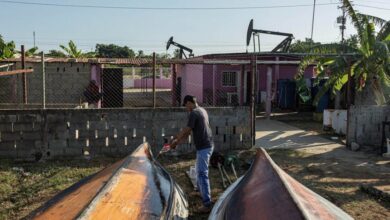Milei’s Tough Austerity Measures: Reshaping Argentina’s Economic Future

President Javier Milei has presented a bold budget plan 2025, aiming to eliminate Argentina’s fiscal deficit. As inflation ravages the country, Milei’s tough stance on spending cuts sets him apart, drawing comparisons with other Latin American economies facing similar challenges.
Milei’s Stance: Austerity or Bust
In an unprecedented move, Argentine President Javier Milei personally pitched his 2025 budget proposal to Congress, bypassing his economy minister to emphasize the importance of his fiscal policies. Known for his libertarian ideology, Milei lambasted Argentina’s long-standing fiscal mismanagement and pledged to eliminate the country’s chronic deficit. His budget promises austerity and signals a new phase of confrontation with an opposition-dominated Congress that controls the government’s finances.
Milei’s key message during his speech was clear: zero deficit or bust. “Managing means cleaning up the balance sheet, deactivating the debt bomb that we inherited,” Milei told lawmakers, vowing to veto any attempt to compromise his tight fiscal policy. His proposal aims to continue reducing government spending, which he sees as essential for restoring market confidence and addressing Argentina’s dire economic situation, marked by one of the world’s highest inflation rates.
Despite controlling less than 15% of Congress, Milei is determined to advance. Over the past nine months, his administration has implemented deep cuts to public spending, resulting in a fiscal surplus for the first time in two decades. The cuts, however, have been met with mixed reactions, as they have come at a significant social cost. Poverty has skyrocketed, with nearly 60% of Argentines now living below the poverty line. The cuts have included reductions in financial transfers to provinces, slashing energy and transport subsidies, and holding wages and pensions steady despite inflation.
Milei’s political isolation makes this a tough battle. Opposition parties have called for higher wages and pensions to help hard-hit Argentines, but Milei refuses to budge. His message to Congress is simple: any increase in spending must be accompanied by cuts elsewhere. With poverty rising and social unrest growing, Milei’s budget reflects a gamble that the worst economic pain has passed and that austerity will ultimately pay off.
How Other Latin American Countries Handle Austerity
Milei’s approach to fiscal austerity is not unique in Latin America, where several countries have wrestled with similar economic crises. However, the outcomes of these policies have varied, and Argentina’s situation bears significant similarities and contrasts to its neighbors’ experiences.
Take Brazil, for example, where former President Michel Temer implemented austerity measures in 2017 to address a spiraling budget deficit. Like Milei, Temer focused on spending cuts, mainly targeting social programs and public sector wages. The measures were initially unpopular, sparking protests and strikes. However, Brazil’s economy eventually began to recover, with lower inflation and a shrinking deficit by 2019. That said, the long-term impact on inequality and poverty remains a contention, with many critics arguing that the poorest Brazilians bore the brunt of the cuts.
Meanwhile, Mexico has taken a different route under President Andrés Manuel López Obrador (AMLO). Instead of strict austerity, AMLO has focused on reducing government waste and corruption while maintaining or increasing spending on social programs. His administration has sought to balance fiscal responsibility and social investment, though critics argue that this approach risks ballooning the national debt. Mexico’s economic growth has remained sluggish, but AMLO’s policies have been relatively popular among the working class, who feel less of the immediate pain of austerity measures.
In contrast, Venezuela offers a cautionary tale of what happens when fiscal mismanagement and lack of spending cuts lead to economic collapse. Years of unchecked government spending and hyperinflation have decimated the country’s economy, making essential goods and services scarce. Milei frequently cites Venezuela as an example of what he hopes to avoid, arguing that Argentina must confront its fiscal problems head-on before it reaches a similar tipping point.
Milei’s fiscal strategy also shares some elements with Peru, where former President Pedro Pablo Kuczynski implemented austerity policies in 2017. While these policies helped reduce Peru’s deficit, they also led to widespread protests, particularly from public sector workers and unions. The balancing act of restoring fiscal discipline while maintaining social stability is a challenge that Milei now faces in Argentina.
These comparisons illustrate that while austerity can help address fiscal imbalances, it comes with significant social and political risks. In Argentina, where public frustration is already high due to inflation and poverty, Milei must navigate a delicate path to achieve long-term stability.
Poverty, Protests, and Public Response
One of the most significant consequences of Milei’s fiscal austerity has been the dramatic rise in poverty. According to recent reports, nearly 60% of Argentines live below the poverty line, up from 44% when Milei took office in December 2023. The cuts have hit the most vulnerable sectors of society the hardest, with wages and pensions failing to keep pace with inflation, which remains among the highest in the world.
Milei has clarified that fiscal pain is necessary to restore long-term economic stability. However, for many Argentines, the immediate consequences are devastating. Last week, the debate over pensions reached a boiling point when Milei vetoed a bill to increase social security spending. The move sparked widespread protests, particularly among retirees whose purchasing power eroded significantly due to inflation.
Protesters took to the streets of Buenos Aires, clashing with riot police who used tear gas and water cannons to disperse the crowds. Retirees, who have lost roughly half of their purchasing power over the past year, were especially vocal in their opposition to the government’s austerity measures. Despite the protests, Milei remained steadfast, insisting that his fiscal discipline was non-negotiable.
The protests highlight a growing divide between the government and the public. While Milei has retained some popular support due to his efforts to curb inflation, the social consequences of his policies are becoming increasingly difficult to ignore. Many Argentines, particularly those in the lower-income brackets, feel abandoned by the government’s focus on fiscal discipline at the expense of social welfare.
Milei’s budget proposal also includes cuts to education and healthcare, further fueling public anger. Opposition parties have capitalized on this discontent, pushing for increased spending on public services. While Milei has vowed to veto any such proposals, the political pressure is mounting, and the government’s ability to maintain its austerity course is far from certain.
Can Milei Navigate Argentina’s Economic Crossroads?
Milei’s government faces an uphill battle in securing the approval of his 2025 budget. With opposition parties controlling the majority of Congress, Milei’s political isolation is a significant obstacle. Despite his aggressive rhetoric, which included referring to opposition lawmakers as “miserable rats,” the president will need to engage in weeks of negotiations if he hopes to pass his budget without significant concessions.
The stakes are high. Argentina’s economic crisis is one of the most severe in its history, with inflation, poverty, and unemployment at critical levels. Milei has staked his presidency on restoring fiscal stability, but doing so will require navigating a complex political landscape.
One key question is whether Milei can maintain popular support while implementing harsh austerity measures. While inflation has decreased from its peak of 26% per month in December 2023 to 4% today, the broader economic picture remains bleak. Argentina’s economy contracted by more than 3% in the first half of 2024, and the country’s social fabric is fraying under rising poverty and inequality.
Milei’s Finance Ministry has expressed optimism about the future, projecting an annual inflation rate of 18% by the end of 2025 and a 5% growth rate for the economy. However, these projections depend heavily on the government’s ability to maintain fiscal discipline and win the support of Congress for its budget.
Ultimately, Milei’s ability to navigate Argentina’s economic crossroads will depend on his political understanding and monetary policies. If he can build alliances and find common ground with opposition lawmakers, he may be able to push through his austerity measures and lay the groundwork for long-term recovery. However, if the social unrest continues to escalate, Milei risks alienating the very public whose support he needs to succeed.
Also read: Javier Milei: A Self-Styled “Economic Nostradamus” in Argentina
President Javier Milei’s push for fiscal austerity is shaping up to be a defining moment in Argentina’s economic history. While his strict budget proposals aim to restore market confidence and eliminate the fiscal deficit, they come at a significant social cost. As protests mount and poverty rises, Milei must balance his commitment to fiscal discipline with the growing demands for social support. His ability to navigate the complex political and social landscape will determine whether Argentina can emerge from its economic crisis stronger or face deeper turmoil.





